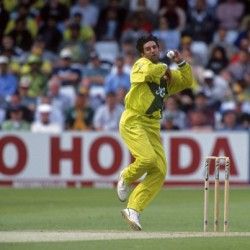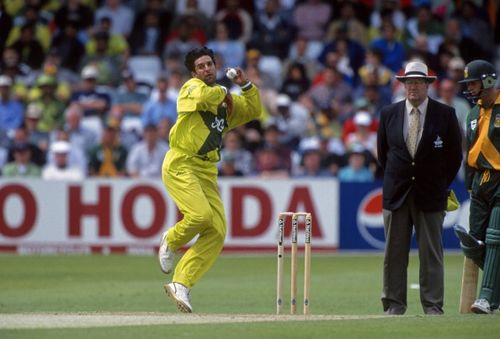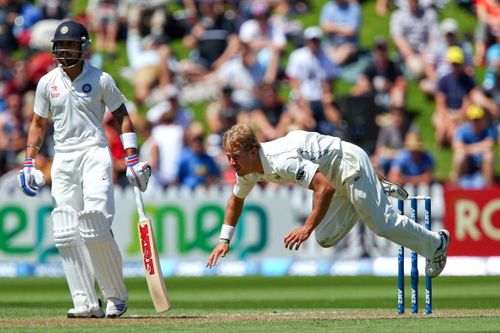
Time for umpires to clamp down on back foot no-balls

The art of swing bowling is one that isn’t mastered by many. Nicknamed “The King of Swing”, Wasim Akram, one of the greatest fast bowlers of all-time mastered the art of swing bowling. The Pakistani pacer had every trick in the book. He could bowl a menacing bouncer, a toe crushing yorker and not only could he swing the ball both ways, he was also master of the reverse swing.
To Akram’s credit, he has many awards and accolades, but one thing that stood out about him was ability to constantly reinvent himself as he got older. Amongst many other things, he was credited with bringing in something new to the table. There are few batsman who played in the nineties that wouldn’t remember, the frightening frame of Akram, going wide of the crease and angling the ball into the stumps.
Up until Akram came onto the scene, there weren’t too many left arm fast bowlers, who went wide of the crease, to create an angle. Akram did that to perfection and since then it seen as a necessary skill in the armoury of modern-day fast bowler. But, it is also a skill that is difficult to master because of the law that stipulates that if the back foot lands on the return crease, it is deemed a no ball. But, there have been players, who have overcome that and continued to do what Akram started.

One bowler, who has been going wide of the crease to great effect has been New Zealand’s Neil Wagner. His naturally aggressive temperament and his ability to go wide with consummate ease, has meant that he has transformed himself from a bit-part player to one of the nation’s stock bowler. The fact that he has been in the tutelage of one, Shane Bond, arguably the nation’s most lethal pacer, has certainly helped his cause.
A little aggression is a good thing, but you can sometimes have too much of a good thing. For all of Wagner’s aggression, one thing has stood out throughout the two-test series against India. Whilst going wide of the crease and cramping up the batsman for room is a great tactic that might just become a little too predictable after a little while. In the first test, Wagner went wide of the crease time and again and although he bowled a lot of back foot no balls, not many of them were called. Including one involving a crucial wicket.
Although he bowled his team to victory in the first test, it seems as though Wagner isn’t learning from his mistake. On Day two of the second test, Wagner bowled more than half a dozen back foot no-balls, but none of them were called. None, apart from the delivery in which Zaheer Khan nicked to slip, in what was a questionable call, in which the benefit of doubt, went to the batsman.
Had he got his man, it would have been Wagner’s fiftieth wicket. But although the decision wasn’t clear cut, it was just karma catching up with. Whilst it is clear that Wagner is getting away with a few, umpires have to clamp down on that sort of thing. Because, it is almost as if the back foot no-ball is only noticed when a wicket falls, on other occasions, umpires don’t seem to look out for it.
The truth is, they should be looking out for it, and so what if a wicket doesn’t fall, a no-ball is still a no-ball. Only if the punishments are severe, will bowlers realize their flaws and the sooner umpires start looking for it, the better it is for all concerned. In the end, although Wagner did have the last laugh and got his 50th wicket, he was only able to do so, after coming close to the stumps and controlling his urge to go wide.
Once umpires start calling his bluff, Wagner will soon realize that controlled aggression alone will get him to where he wants to be. And whilst he might be New Zealand’s game changer, he has to learn to abide by the rules of the game.